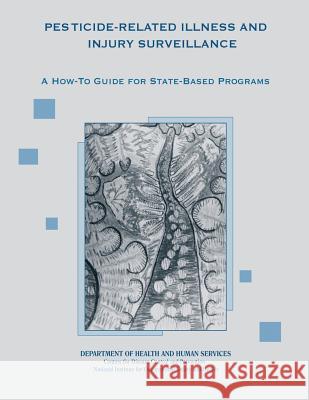Pesticide-Related Illness and Injury Surveillance: A How-To Guide for State-Based Programs » książka
Pesticide-Related Illness and Injury Surveillance: A How-To Guide for State-Based Programs
ISBN-13: 9781495967726 / Angielski / Miękka / 2014 / 290 str.
Pesticide-Related Illness and Injury Surveillance: A How-To Guide for State-Based Programs
ISBN-13: 9781495967726 / Angielski / Miękka / 2014 / 290 str.
(netto: 70,66 VAT: 5%)
Najniższa cena z 30 dni: 73,99
ok. 16-18 dni roboczych
Dostawa w 2026 r.
Darmowa dostawa!
Surveillance data can be used to identify new emerging pesticide problems, estimate the magnitude of pesticide poisoning, and evaluate intervention and prevention efforts. Recognizing this, the National Institute for Occupational Safety and Health (NIOSH) Strategic Surveillance Plan recommends that States conduct surveillance for acute pesticide-related illness and injury. Since 1987, NIOSH has provided financial and technical support for State-based acute pesticide poisoning surveillance programs. NIOSH is not the only organization that has recommended improved and/or expanded surveillance in this area. Others include the American Medical Association, the Council for State and Territorial Epidemiologists, the United States Government Accountability Office, and the Pew Environmental Health Commission. Despite these recommendations, most States do not conduct acute pesticide-related illness and injury surveillance. Acute pesticide-related illness is a relatively complex disease. Approximately 16,000 pesticide products are currently registered in the United States. In addition, all organ systems are susceptible to pesticide toxicity. The multitude of pesticide products and associated health effects may act as a barrier to establishing surveillance programs. NIOSH developed this guide to provide standards and principles that can help to master this complexity. This document will be useful to agencies that are developing an acute pesticide related illness and injury surveillance program or are interested in maintaining and improving an established surveillance program. The guide provides (1) information about the importance of pesticide poisoning surveillance; (2) mechanisms to improve reporting of cases to surveillance programs; (3) methods to investigate reported cases; (4) guidance on using the case definition; and (5) additional resources on pesticide toxicology, pesticide usage, governmental partners, and surveillance. The goal of this guide is to assist the efforts of our partners to identify pesticide poisoning risk factors. Pesticide poisoning prevention can be achieved by targeting interventions toward these identified risk factors. NIOSH hopes individuals and agencies interested in pesticide poisoning surveillance and prevention (e.g., local, State, and Federal government agencies, community-based organizations, and international agencies) will find this guide useful for identifying and preventing pesticide poisoning.
Zawartość książki może nie spełniać oczekiwań – reklamacje nie obejmują treści, która mogła nie być redakcyjnie ani merytorycznie opracowana.











